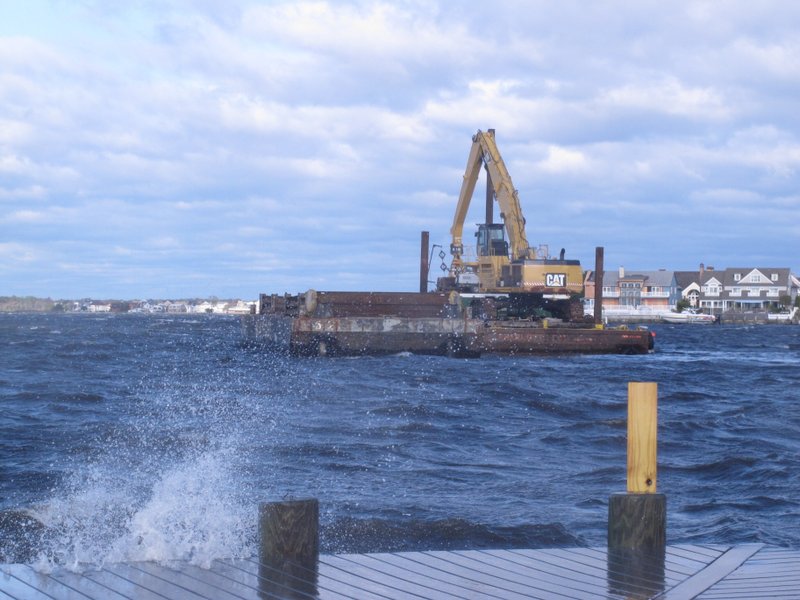The shutdown of one of the nation’s oldest nuclear power plants last year is having a surprising, stinging consequence for a New Jersey bay considered one of the nation’s most fragile.
The environmental group Save Barnegat Bay held a conference Wednesday where scientists noted the increase of tiny jellyfish near the Oyster Creek nuclear power plant.
The stinging sea nettles that had been sucked into the plant and killed by heated water are now thriving and multiplying.
The influx has some worrying about swimming conditions in the area, while other say the plant closure should begin to restore conditions to where they were before the plant became operational in 1969.
“This is one of the unintended consequences” of the plant’s shutdown, said Paul Bologna, a professor at Montclair State University known for his research on jellyfish. “There are huge numbers of them out there now, substantially more than we had been seeing in 2018.”
Bologna and others presented their findings at a three-day conference on Barnegat Bay organized by the environmental group.
“When I was a kid, we played in the bay all day long, so long that our skin was all pruned up,” said Britta Wenzel, Save Barnegat Bay’s executive director. “My kids had their first swimming experiences in the bay, and in a lot of places, you can’t do that anymore.”
The nuclear plant, which closed in Sept. 2018, had been altering conditions in the bay for decades, discharging water that was 10 degrees hotter than normal.
Joe Bilinski, research scientist with the New Jersey Department of Environmental Protection, said the immediate effect of the plant shutdown is the beginning of a return to conditions in the bay that existed before the plant went online.
“Conditions are going back to what they were 50 years ago,” he said. “It’s starting to restore an equilibrium.”
Environmentalists had long sought the closure of the plant, arguing that its heated discharge water harmed the bay. They also cited the large numbers of fish and turtles that got pinned against suction grates at the plant’s water intake pipes, and the millions of fish and crab eggs that were killed by traveling through the water as it surged around the radioactive parts of the plant, picking up heat.
But that same heat that killed the fish and crab eggs also did an effective job of killing tiny jellyfish polyps, Bologna said. Now, in the absence of heated water, those tiny jellyfish are surviving and thriving.
The plant’s heated water played a role in its shutdown. New Jersey environmental officials had wanted it to build closed-system cooling towers to eliminate the need to draw water from the creek to cool the plant, but its former owners balked, saying that would cost too much. Instead, they reached an agreement with the state to shut the plant down earlier than they had intended.
So far the increased numbers of jellyfish are being found mainly in two locations near the former plant, in the Forked River section of Lacey Township, and in Toms River.
But scientists say they expect the sea nettles to expand into parts of the bay and into other waterways.
Fish and crab populations could benefit from the shutdown, even as species that were drawn to the warmer waters now leave the area.
The plant used an almost unfathomable amount of water each day to cool its reactors: 1.4 billion gallons, Bilinski said. Now, only 5% of that amount circulates through the plant, and the artificial channel connecting the Forked River and the Oyster Creek is almost stagnant, “like a lagoon,” Bilinski said.
That means fish and turtles are no longer being trapped up against intake grates.
But is also means that some species of fish that had been drawn to the warmer waters of the bay have now largely disappeared.
Several long-term studies are underway measuring changes in and around the bay after the plant’s shutdown.
(AP)












2 Responses
As the Greens will soon realize, they’ve made it much more difficult to achieve a “carbon-free” electric power system by forcing the closure of thse nukes. Instead we are headed to an essentially wind/solar/hydro resource base that i backed up by natural gas generation. The latter, is subject to considerable price fluctuations and deliverability problems as the Northeast governors seem intent on stopping new interstate gas pipelines.
don’t worry, what with global warming increasing every year, so we are told, the ocean will heat up and kill the jelly fish….